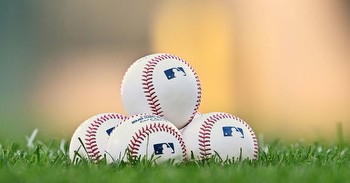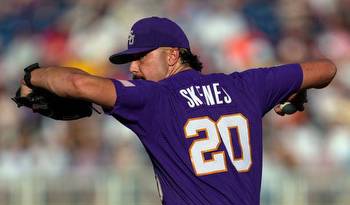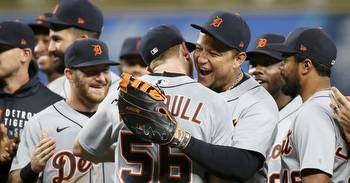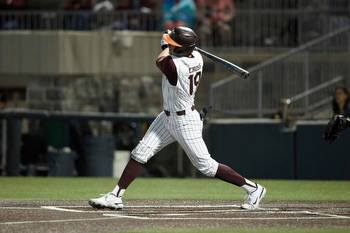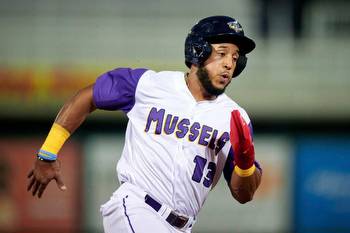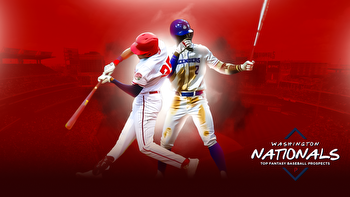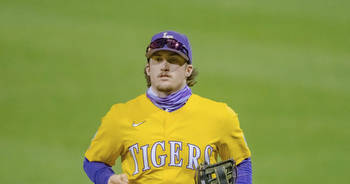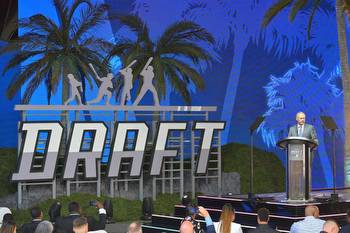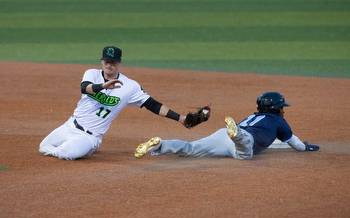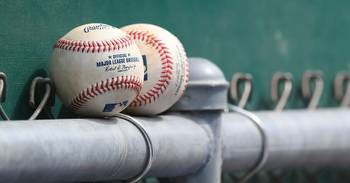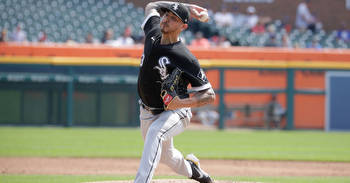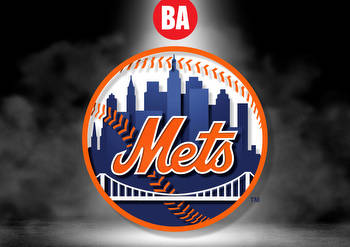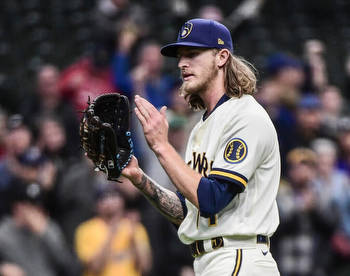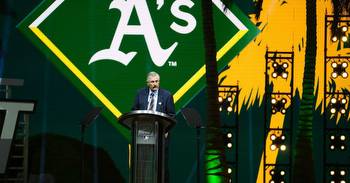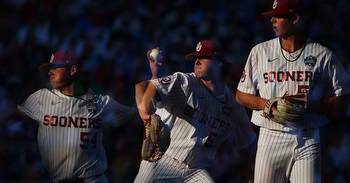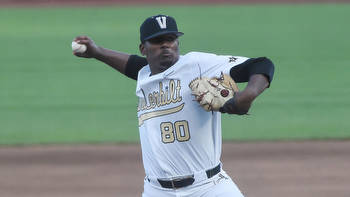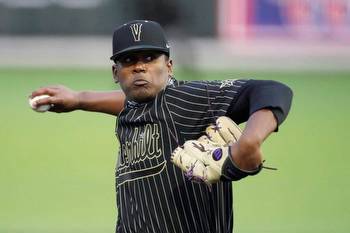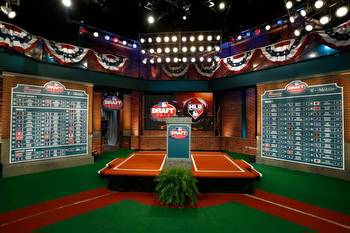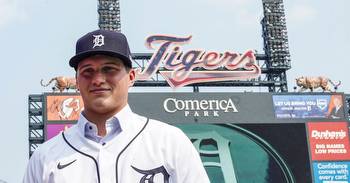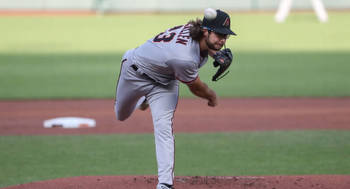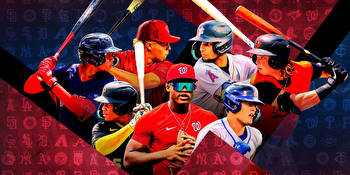White Sox top 20 prospects 2023: Keith Law ranks Chicago’s minor league farm system
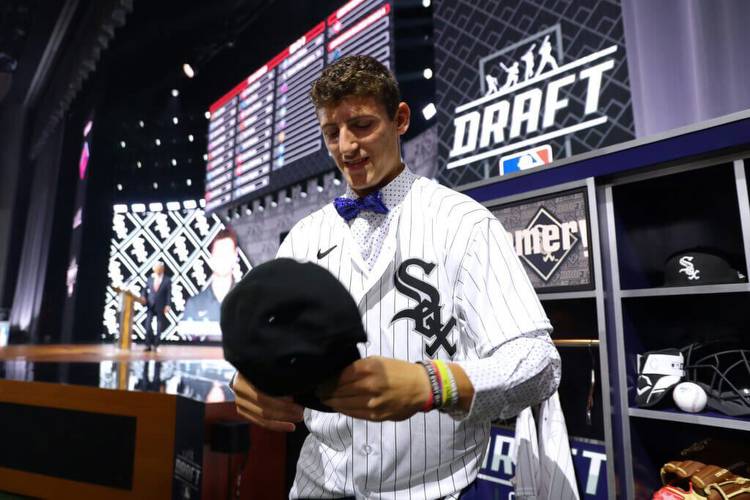
The White Sox’ system was kind of a mixed bag last year, with their first-rounder from last year taking a huge step forward and a few other position players having solid seasons that boosted their standing. But there’s a real lack of pitching here and not many guys you could even squint and see becoming above-average or better regulars.
MLB prospect rankings 2023: Keith Law’s complete guide to every farm system
The ranking
1. Colson Montgomery, SS (Top 100 ranking: No. 25)
Montgomery was a risky pick in the first round in 2021 — he was 19 at the draft and came from a high school in rural Indiana where he didn’t face much good pitching. He’s panned out so far, reaching Double A last year after very strong performances as a 20-year-old in Low A and High A where he showed advanced plate discipline and bat-to-ball skills. Before fading in August as he got tired, he was hitting .309/.420/.462 between the two levels, and then struggled after the White Sox promoted him, along with all of their key prospects, to Double A to finish the year. He’s 6-4 with long limbs, and his swing can get long when he’s going for pitches on the outer edge or beyond, but he’s disciplined enough that he hasn’t chased much at the lower levels. The consensus among scouts is that he’ll move off shortstop, and he may very well outgrow it, but he gets very good reads and comes in well on balls, with plenty of arm for the left side of the infield. With his strong hit/OBP skills, Montgomery’s ceiling comes down to power; right now it’s below-average, but as he fills out he should get at least to average, which would make him a solid regular at third or an above-average regular at short.
Age:
Bats: Right | Throws: Right
International signing in 2018
Ramos has excellent bat speed and plus raw power, and he’s a 50/55 defender at third who should be the same or better at second, giving him a high probability of becoming a regular at one of those spots. There’s no projection here, but probably none needed given the present power, with future improvements more from approach — he can get too pull-heavy, even with some power going the other way — that might make him an above-average regular. He’s one of the “just missed the just missed list” guys, somewhere in the top 125 or so, although I don’t rank players beyond 100.
3. Oscar Colás, OF
Signed last January for $2.7 million, Colás is one of the older prospects on my lists, having turned 24 in September, but he’s also major-league ready at this point, offering proximity without ceiling. He’s got 55-60 power with average speed, a fringy defender in center who should be fine in either outfield corner. He can crush a fastball but has had issues with offspeed stuff, mostly chasing out of the zone but with enough in-zone swing and miss to limit his AVG/OBP potential. He looks poised to be the White Sox’s starting right fielder, where he should hit 20 or so homers with an OBP in the low .300s.
4. José Rodríguez, IF
Rodríguez started out horribly in 2022 but finished strong, getting back to the high-contact, medium-power guy he’d been the year before; if you split his year exactly in two, his second-half line was .330/.397/.546 with just an 11.5 percent strikeout rate. He’s an average runner with great instincts on the bases, stealing 40 bases in 50 attempts last year. He’s played both middle infield spots but is a second baseman much more than shortstop, with the bat probably enough to make him a regular there — maybe even an above-average one with his pure hit tool.
Age:
Bats: Right | Throws: Right
International signing in 2016
Sosa jumped from 11 homers in 2021 to 24 last year, which gives him an outside chance to end up a regular despite a plan at the plate that involves swinging early and often, including at pitches outside of the zone — even fastballs, although more so at offspeed stuff. The White Sox did a lot of work with him to improve his load and help unlock that power by getting his hips into better position before he starts his swing. He might be able to play short, although you’d always want someone better, while he’s at least average at third base and probably ends up there. He could be a low-OBP regular with 20-25 homer power, which would make him a regular, although if he stays this overaggressive then he’ll end up a bench player.
6. Noah Schultz, LHP
Schultz was Chicago’s first-round pick in 2022, as they went for the local kid, where the local kid happened to be a 6-foot-9 high school lefty. He comes from a low slot, sitting in the low-90s with quite a bit of projection remaining, likely to get to the mid-90s with a plus slider once he’s filled out. He didn’t pitch much his senior year after a bout with mononucleosis early in his season. The history of pitchers this tall is poor, as few exist and fewer still stay healthy, but there is substantial upside if he does because of the huge deception he gets from his height and his arm slot.
7. Peyton Pallette, RHP
Pallette would have likely been a high first-round pick had he not blown out his elbow before the 2022 season, allowing the White Sox to get him in the second round. Prior to the injury, he’d been up to 96 mph with an above-average curve and changeup, needing to improve his command and control. His arm was late relative to his landing leg, which doesn’t help a pitcher repeat his delivery and might have some connection to arm problems, so there’s some work to do on his delivery when he’s back. I love the pure stuff, though, and he could be a No. 2 starter if he comes all the way back.
8. Cristian Mena, SP
Mena is just 20 but has a fairly mature body, in a good way, showing two average pitches now with the curveball maybe a tick above, with fringe-average control now but below-average command. It’s a clean delivery that he repeats well enough to improve the command with reps, coming from a high slot that doesn’t give him a ton of deception. He can throw a decent slider as well, with no changeup, showing a modest platoon split last year where he gave up much more power to lefties. There’s fourth starter upside here depending on the development of those latter two pitches and whether he can tighten up the fastball command.
9. Sean Burke, RHP
Burke started out strongly in 2022 but missed a couple of starts with a lat injury in June and might have come back too quickly, bombing in his first outing back (six runs in one inning on June 23) and didn’t have the same crispness to his stuff in the second half. He’s normally 93-96 mph with good characteristics, making the fastball his best pitch, working with a slider and curve, along with a barely-used changeup he’ll have to improve to continue to get left-handers out as he moves up. His slider has the spin to be an out pitch but the pitch needs more power, something he should have given his arm speed. He has mid-rotation upside with several areas for improvement before he gets there.
10. Jonathan Cannon, RHP
Cannon was their third-round pick in 2022 as a 22-year-old junior out of Georgia who went undrafted as a sophomore the year before. He has six distinct pitches, adding a cutter last spring and reverting to the four-seamer as his main fastball, giving up too much hard contact for someone with his stuff. He’s competitive and has plus control, with a potential out pitch in the cutter, giving him a clear path to becoming a back-end starter. There’s work to do here for player development, but he starts with a strong foundation.
11. Jordan Sprinkle, SS/2B
Sprinkle might be able to handle shortstop, which would give him a lot more value in the long run, although even at second base he at least has a path to be a regular if he hits more like he did as an underclassman than the way he did in his draft year of 2022. The White Sox took him in the fourth round, a great value pick for a guy who hit .353/.402/.536 as a middle infielder when he was a sophomore. He’s a 50/55 runner with good instincts on the bases for some extra value. His most likely outcome is utility infielder but there’s a path to a regular here.
12. Matthew Thompson, RHP
Thompson’s an excellent athlete with an unathletic delivery, sitting 93-94 mph with a plus curveball he can land for strikes, touching 96 mph with power to a slider as well. He throws enough strikes to be close to average control, at least, but I’m not sure there’s command with an arm action like his. It’s mechanical with a long path for his hand and no momentum from the first half of his delivery. I’d always liked him as a potential starter given his athleticism and arm strength, but at this point I think he’s more likely to end up in relief.
13. Jared Kelley, RHP
Kelley walked over a man an inning in 2021, so his performance in 2022, walking 47 in 76.2 innings (14.3 percent of batters faced) marks a large improvement and gives him a chance for a major-league future he didn’t seem to have a year ago. He uses a two-seamer now, 92-94 mph with good life, and the slider is much improved, while his changeup has always been there as a potential out pitch. It’s very unlikely he’ll get back on the start path, but that it is even a remote possibility at this point is progress. He is just 21 this year, with size and enough stuff to hang his hat on.
14. Wes Kath, 3B
The White Sox’ second-round pick in 2021 probably needed short-season ball in his first full season in pro ball, but those leagues don’t exist anymore, so he went to Low A and struck out in a third of his plate appearances at the level, even though he barely faced any lefties. He has some power and a decent approach at the plate, considering his age and inexperience, with a really good swing and enough athleticism to stick at third base. He might need to repeat a level at some point, maybe even Low A this year, but I haven’t given up on the bat.
15. Ryan Burrowes, SS
Signed out of Panama last January for just $70,000, Burrowes is a big-bodied shortstop with good actions who might outgrow the position, but he handles the bat well already and projects to enough power to profile at second or third. He’s only played in the Dominican Summer League so far, and should make his U.S. debut this year in the Arizona Complex League for his age-18 season.
16. Norge Vera, RHP
Signed in January 2021 for $1.5 million, Vera’s U.S. debut came last year and was underwhelming, sitting 90-92 mph as a low-innings starter with a slurvy breaking ball that became less effective as he moved up the ladder. He walked 16 men in 11 1/3 innings between High A and Double A to end the season.
17. Yoelqui Céspedes, OF
Céspedes is a fourth outfielder at best, with an awful approach at the plate and difficulty hitting good fastballs. He can defend, with plus speed and a plus arm, with enough raw power to run into a few mistakes and maybe profile as an extra guy on the bench.
18. Luis Mieses, OF/1B
Mieses is power over hit, not a runner at all, so he’s limited to the corners and his on-base skills won’t support him becoming a regular. He’s a left-handed hitter, though, so he has a chance to be an extra outfielder/bench bat on a team that has someone else to back up center.
19. Tanner McDougal, RHP
Chicago’s fifth-round pick in 2021, McDougal missed the year with Tommy John surgery but should be ready to go for spring training. He showed huge spin rates on his curveball with improving velocity after he signed that summer, so he’d be one to watch for a big jump if he comes back fully healthy.
20. Loidel Chapelli, 2B
Chapelli is a Cuban second baseman who was very old to be in the DSL at 20 but has a little power and a little speed, so while the .636 slugging percentage is probably not very telling, he’s worth watching when he gets to Low A this year.
Others of note
Wilferd Veras may be a first baseman or even a DH, but he has plus-plus power that would make him a real prospect if he develops any sort of plan at the plate to get to it … Lefty Tyler Schweitzer has a high-spin fastball with big vertical break, so it plays above its fringy velo, with a slider that’s probably a high 45 that plays up because of the contrast with the fastball. He’s got average control with a touch better command, so he could be a back-end starter.
2023 impact
Colás is probably their right fielder this year. He’s not next on the depth chart, but I would like to see José Rodríguez get a shot at second base this year if they don’t otherwise upgrade over Leury Garcia and Romy Gonzalez.
The fallen
Right-hander Andrew Dalquist was one of two high school pitchers the Sox took in 2019, along with Thompson, betting on some upside after they took Andrew Vaughn No. 3 overall. Dalquist was supposed to be a fairly safe command guy with mostly average stuff, but instead, his stuff has ticked up while his command has gone in the toilet. He’s walked 122 guys in 190 pro innings while giving up a lot of hard contact, and he posted an ERA just shy of 7 in High A last year.
Sleeper
Ramos wasn’t that far off the top 100 and he’s the most likely guy here to take a step forward while still being eligible a year from now.

